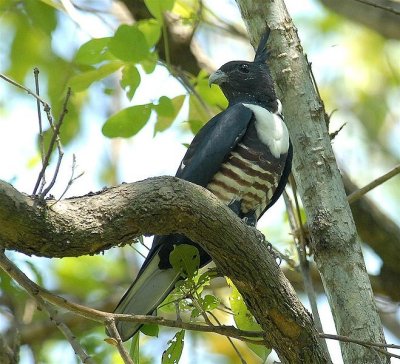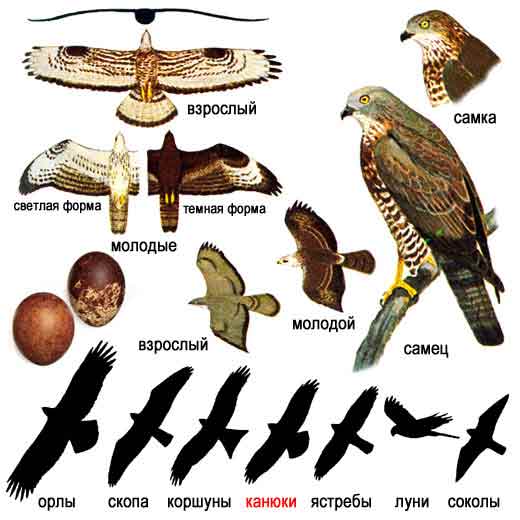 Photographed
at Nylsvlei, South Africa 2006
Photo:
© Neil Gray
Photographed
at Nylsvlei, South Africa 2006
Photo:
© Neil Gray
The Honey Buzzard is best distinguished from the Common Buzzard
by rather subtle differences in shape.
The head is longer and narrower, the tail longer and slimmer
and the wings are longer and held horizontally during soaring
flight. Plumages of both buzzards are confusingly variable
but Honey Buzzards are sometimes characteristically barred
across the underwings and if you see that the tail has only
three well-spaced bars then you can be sure you've got a Honey
Buzzard.
Best is if you can get both species to fly together....
A small number of pairs breed in Britain each year, mostly
in the south of England, but with a few in Highland Scotland.
A number of well-publicised raptor watchpoints have been set
up, to make seeing the species easier
. The best of these is probably Great Haldon Forest near Exete.
Elsewhere occasional birds are seen on passage,
particulalry on the south and east coasts.
 ©
http://www.floranimal.ru
©
http://www.floranimal.ru
The easiest place to see these birds is a the
migration
bottlenecks such as Gibraltar, Istanbul and Borcka. Otherwise,
they are widespead breeding birds throughout much of Europe.
They are difficult to see in their breeding woods but spend
a great
deal of time in the air, either soaring or displaying.
The following shows a Honey Buzzard
migrating
from Scotland to Gabon, right under Equator, shown on a report
from
The Highland Foundation for Wildlife , found
at http://
www.roydennis.org
(not valid as per Sept. 2010)
 Female
European honey-buzzards squabbling over invertebrate prey
Female
European honey-buzzards squabbling over invertebrate prey
Roland Bischoff
http://www.arkive.org
 ©
www.roydennis.org
(not valid as per Sept. 2010)
©
www.roydennis.org
(not valid as per Sept. 2010)
On 5th August, 2002, we caught the adult male (pictured
below) who is a most distinctive and very pale individual.
He was ringed GF 53481. The measurements
were: wing length 410 mms, tail 253 mms and weight
785 grams.
He was in excellent condition. We fitted one of the
new generation satellite transmitters. This should
give more accurate signals during migration.
On release he flew off strongly and joined the female
who had been flying over head
(she is a dark brown individual).

Male's radio ceased transmitting on 22nd March; he
was last located in coastal Gabon, south of the Equator
on 12th March. We conclude the battery had run down
prior to his spring migration.
On 24th May, Darrin Madgin reported
a honey buzzard carrying a satellite transmitter flying
west over Sussex,
and we think that this was likely to be the male,
whose radio stopped transmitting in March.
|
The British population is thought to be 4-23 pairs, although
this figure could possibly be as high as 30 pairs.
The European population is between 40,000-50,000 pairs, with
a further 70,000-100 000 in Russia. Turkish population 50-500.
(the text
above, except the migration part, is an abridged version of
the extensive birdfile feature available in full on a CD-ROM
Guide from Birdguides)













